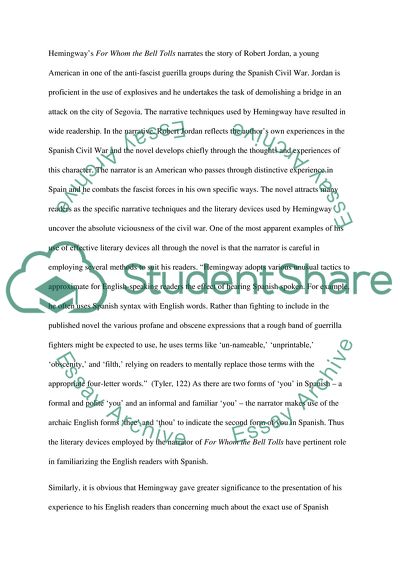Cite this document
(The Spanish Civil War in Literature Case Study Example | Topics and Well Written Essays - 2250 words, n.d.)
The Spanish Civil War in Literature Case Study Example | Topics and Well Written Essays - 2250 words. Retrieved from https://studentshare.org/literature/1550742-examining-the-literary-devices-used-in-the-novels-homage-to-catalonia-for-whom-the-bell-tolls-and-as-i-walked-out-one-midsummer-morning-to-portray-the-spanish-civil-war
The Spanish Civil War in Literature Case Study Example | Topics and Well Written Essays - 2250 words. Retrieved from https://studentshare.org/literature/1550742-examining-the-literary-devices-used-in-the-novels-homage-to-catalonia-for-whom-the-bell-tolls-and-as-i-walked-out-one-midsummer-morning-to-portray-the-spanish-civil-war
(The Spanish Civil War in Literature Case Study Example | Topics and Well Written Essays - 2250 Words)
The Spanish Civil War in Literature Case Study Example | Topics and Well Written Essays - 2250 Words. https://studentshare.org/literature/1550742-examining-the-literary-devices-used-in-the-novels-homage-to-catalonia-for-whom-the-bell-tolls-and-as-i-walked-out-one-midsummer-morning-to-portray-the-spanish-civil-war.
The Spanish Civil War in Literature Case Study Example | Topics and Well Written Essays - 2250 Words. https://studentshare.org/literature/1550742-examining-the-literary-devices-used-in-the-novels-homage-to-catalonia-for-whom-the-bell-tolls-and-as-i-walked-out-one-midsummer-morning-to-portray-the-spanish-civil-war.
“The Spanish Civil War in Literature Case Study Example | Topics and Well Written Essays - 2250 Words”. https://studentshare.org/literature/1550742-examining-the-literary-devices-used-in-the-novels-homage-to-catalonia-for-whom-the-bell-tolls-and-as-i-walked-out-one-midsummer-morning-to-portray-the-spanish-civil-war.


